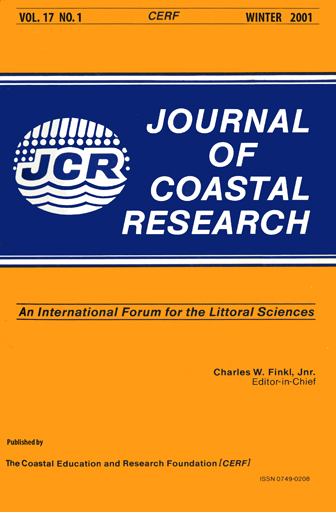Effects of Sea Spray on Vadose Diagenesis of Late Quaternary Aeolianites, Bermuda
Keywords:
Carbonate diagenesis, cemented dune sands.Abstract
This paper examines the role that sea spray plays in the diagenetic alteration, cementation and weathering of late Pleistocene aeolianites in the vadose zone from Bermuda. Aeolianites (dune sands cemented by calcium carbonate) from three distinct stratigraphic units, the Southampton Formation, the Rocky Bay Formation and the Belmont Formation, which equate with Oxygen Isotope Stages 5a, 5e and 7 respectively, have been sampled from sections in the spray zone and in the absence of any significant sea spray input in fresh, recently excavated exposures, inland. Techniques employed to analyse the rock samples include microscope studies of thin sections, scanning electron microscope (with EDX), inductively coupled plasma spectrometry and ion chromatography. The findings of this research indicate that processes operating in the spray zone result in accelerated rates of diagenesis, probably as a result of mixing corrosion causing dissolution of the contained allochems, which then act as the main source for the low Mg-calcite cement. Additional sources of CaCO3 for the cements come from Ca cations in the sea spray; terrigenous aerosols both from within the sea spray and in the atmosphere; and possibly from dissolution of overlying carbonate deposits.
Compared to the normal rates of vadose diagenesis out of the influence of sea spray, more rapid rates of diagenesis in the spray zone have resulted in elevated levels of total cements, increased secondary porosity, lower primary porosity values and fewer preserved allochems in the sediments in the spray zone. Halite is present in the crystalline state within the aeolianite but it does not appear to be important in weathering; it merely coats grains and cements, and partially infills pore spaces. This may be because the individual pore spaces within the aeolianites are relatively too big for the halite crystals to exert any stresses on the surrounding clasts and cements.


